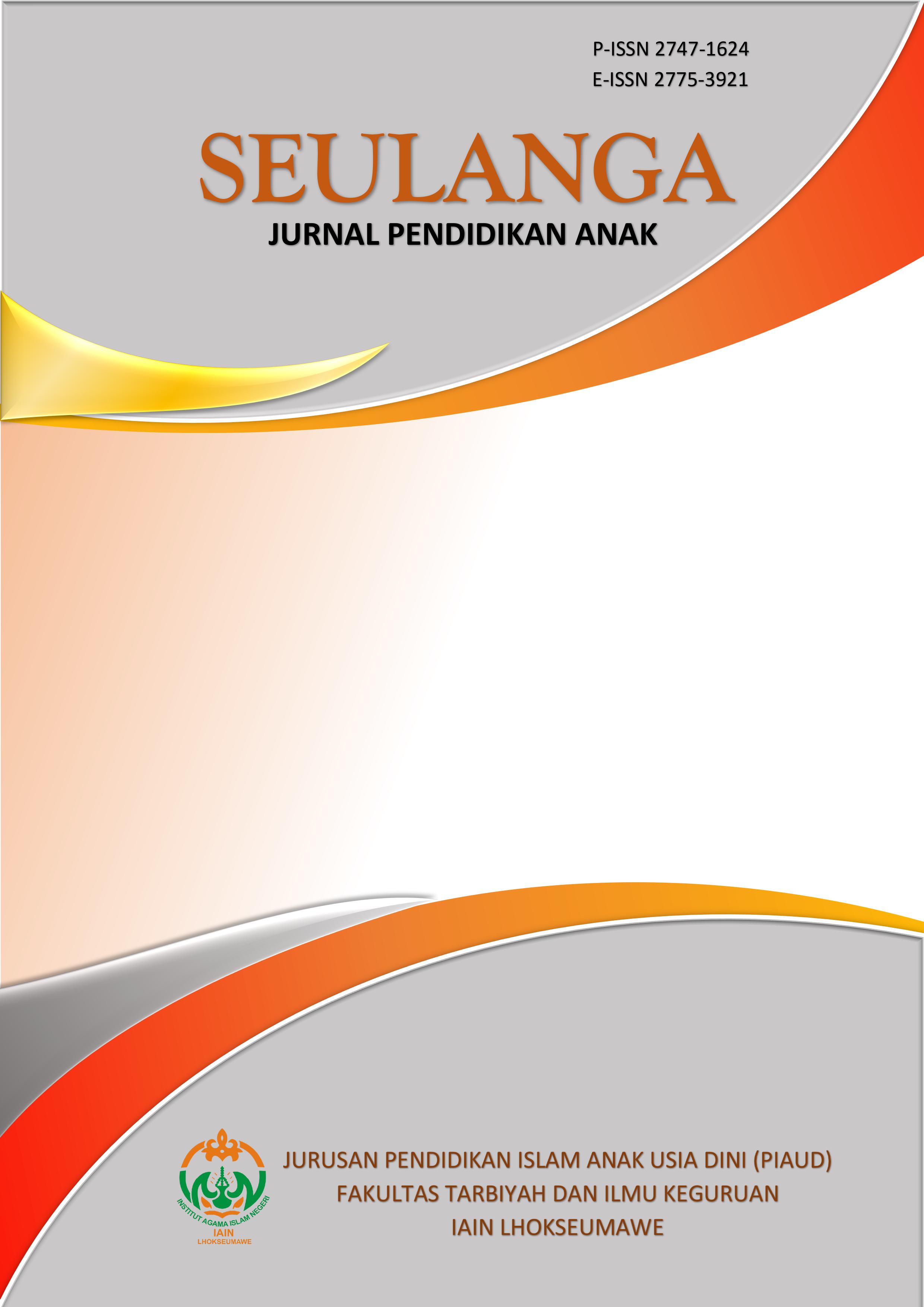Number Mussels as a Medium for Learning to Count for 5 - 6 Years Old
Main Article Content
Zulfatul Kiromiyah
RR. Deni Widjayatri
This study explores the effectiveness of using number mussels as an educational medium to develop counting skills in children aged 5–6 years. Numeracy represents a fundamental cognitive ability that supports problem-solving and daily life activities. However, children’s mathematical understanding often varies depending on genetic, environmental, and experiential factors. To address these differences, this research implements a qualitative classroom action approach conducted at PAUD Hidayatul Mustafid, Tangerang-Banten. Ten students participated in learning activities using the number mussel tool, which integrates numbers, colors, and sizes to stimulate children’s cognitive and fine motor development. Data were collected through observation, documentation, and evaluation, and analyzed using the Revised Bloom’s Taxonomy as an assessment framework. The results demonstrate that the number mussel medium effectively enhances children’s critical, creative, collaborative, and communicative abilities. Participants actively engaged in identifying numbers, performing simple arithmetic operations, and recognizing color and size variations. Overall, the use of number mussels proved to be an effective and engaging learning tool for developing early numeracy skills while simultaneously fostering social interaction and physical coordination among preschool learners.
Authary, N. (2016). Early childhood number sense: An investigation into early-stage arithmetic. Journal of Early Mathematics Education, 1(2), 4–10.
Clements, D. H., & Sarama, J. (2011). Early childhood mathematics intervention. Science, 333(6045), 968–970. https://doi.org/10.1126/science.1204537
Ginsburg, H. P., & Baroody, A. J. (2003). Test of early mathematics ability (3rd ed.). Austin, TX: Pro-Ed.
Juanda, A. (2016). Penelitian tindakan kelas: Classroom action research. Yogyakarta: Deepublish.
Kementerian Pendidikan dan Kebudayaan Republik Indonesia. (2014). Peraturan Menteri Pendidikan dan Kebudayaan Republik Indonesia Nomor 146 Tahun 2014 tentang Kurikulum 2013 Pendidikan Anak Usia Dini. Jakarta: KEMENDIKBUD.
Miftahul Jannah, K. Z. (2021). The influence of genetic factors on early childhood development. Bunayya: Journal of Children's Education, 7(2), 53–63.
NAEYC. (2020). Developmentally appropriate practice in early childhood programs serving children from birth through age 8 (4th ed.). Washington, DC: National Association for the Education of Young Children.
Nuraina, N., Sari, D. D., Yusra, Y., & Yasmin, A. (2023). Development of "hand magic" educational media to introduce the concept of numbers for young learners. Atfaluna: Journal of Islamic Early Childhood Education, 6(2), 17-32. https://doi.org/10.32505/atfaluna.v6i2.6978
Piaget, J. (1972). The psychology of the child. New York, NY: Basic Books.
Vygotsky, L. S. (1978). Mind in society: The development of higher psychological processes. Cambridge, MA: Harvard University Press.
Widjayatri, R. D. (2016). Improving numeracy skills through the active, innovative, creative, effective, and fun learning approach (PAIKEM). Cakrawala Journal, 1(1), 6–8.




